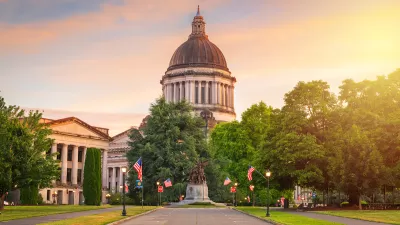Initiated during the depths of Ireland's financial crisis, carbon taxes have been effective in improving the country's environmental and economic outlook.
Elisabeth Rosenthal reports on the effects of new environmental taxes imposed during the depths of Ireland's economic meltdown, and considers the propects for something similar being instituted in the United States. Three years ago, "[Ireland's] government imposed taxes on most of the fossil fuels used by homes, offices, vehicles and farms, based on each fuel’s carbon dioxide emissions, a move that immediately drove up prices for oil, natural gas and kerosene. Household trash is weighed at the curb, and residents are billed for anything that is not being recycled." Other taxes are tied to automobile emissions.
Despite the pain of new taxes on already strained finances, "[e]nvironmentally and economically, the new taxes have delivered results," says Rosenthal. "Long one of Europe’s highest per-capita producers of greenhouse gases, with levels nearing those of the United States, Ireland has seen its emissions drop more than 15 percent since 2008."
"Even more significantly, revenue from environmental taxes has played a crucial role in helping Ireland reduce a daunting deficit by several billion euros each year."
Could such an approach ever be imported to the United States? After all, economists on the right and left have supported such taxes, and, according to Rosenthal, "[a] recent report estimated that a modest carbon tax in the United States that increased incrementally over time could generate about $1.25 trillion in revenue from 2012 to 2022, reducing the 10-year deficit by 50 percent, based on projections from the Congressional Budget Office." Unfortunately, she adds, "the issue remains a nonstarter in the American political arena."
FULL STORY: Carbon Taxes Make Ireland Even Greener

Study: Maui’s Plan to Convert Vacation Rentals to Long-Term Housing Could Cause Nearly $1 Billion Economic Loss
The plan would reduce visitor accommodation by 25,% resulting in 1,900 jobs lost.

North Texas Transit Leaders Tout Benefits of TOD for Growing Region
At a summit focused on transit-oriented development, policymakers discussed how North Texas’ expanded light rail system can serve as a tool for economic growth.

Why Should We Subsidize Public Transportation?
Many public transit agencies face financial stress due to rising costs, declining fare revenue, and declining subsidies. Transit advocates must provide a strong business case for increasing public transit funding.

How to Make US Trains Faster
Changes to boarding platforms and a switch to electric trains could improve U.S. passenger rail service without the added cost of high-speed rail.

Columbia’s Revitalized ‘Loop’ Is a Hub for Local Entrepreneurs
A focus on small businesses is helping a commercial corridor in Columbia, Missouri thrive.

Invasive Insect Threatens Minnesota’s Ash Forests
The Emerald Ash Borer is a rapidly spreading invasive pest threatening Minnesota’s ash trees, and homeowners are encouraged to plant diverse replacement species, avoid moving ash firewood, and monitor for signs of infestation.
Urban Design for Planners 1: Software Tools
This six-course series explores essential urban design concepts using open source software and equips planners with the tools they need to participate fully in the urban design process.
Planning for Universal Design
Learn the tools for implementing Universal Design in planning regulations.
City of Santa Clarita
Ascent Environmental
Institute for Housing and Urban Development Studies (IHS)
City of Grandview
Harvard GSD Executive Education
Toledo-Lucas County Plan Commissions
Salt Lake City
NYU Wagner Graduate School of Public Service





























